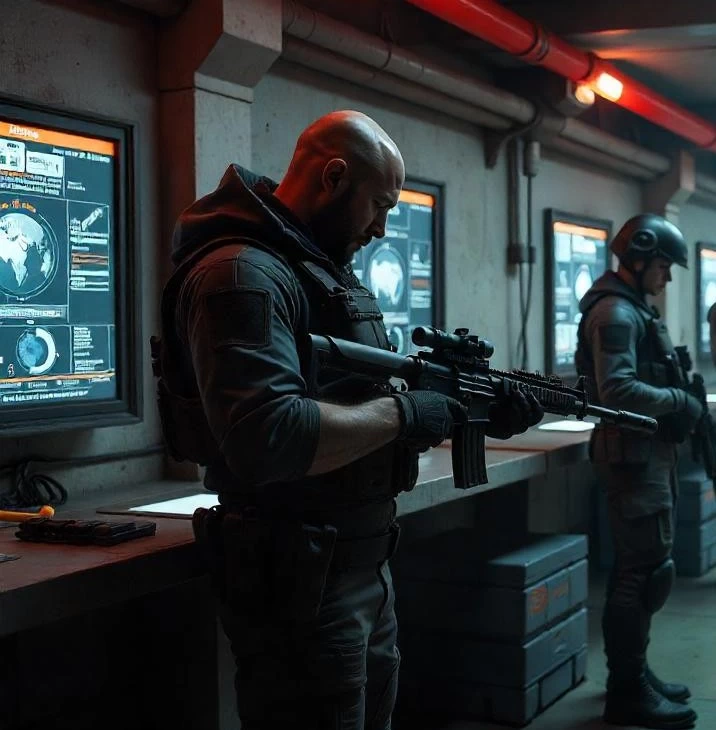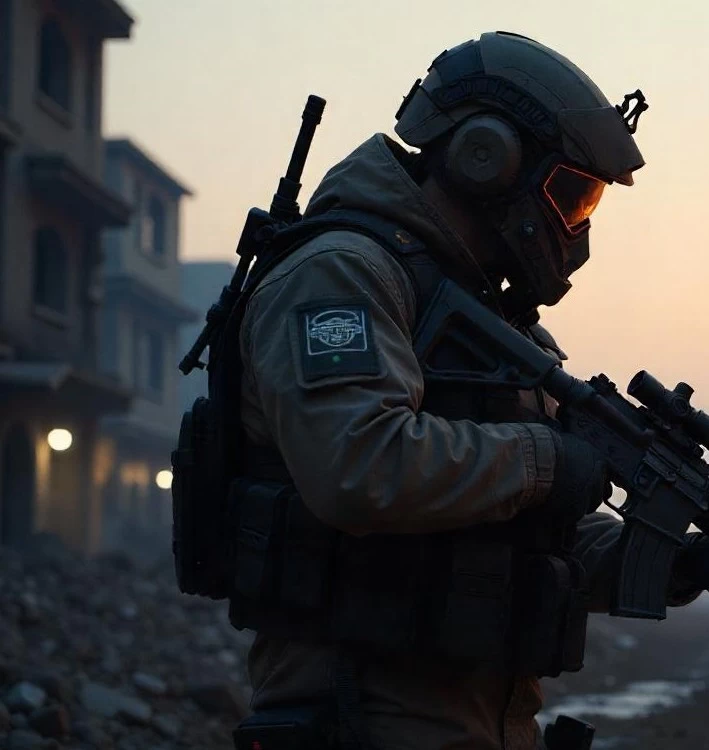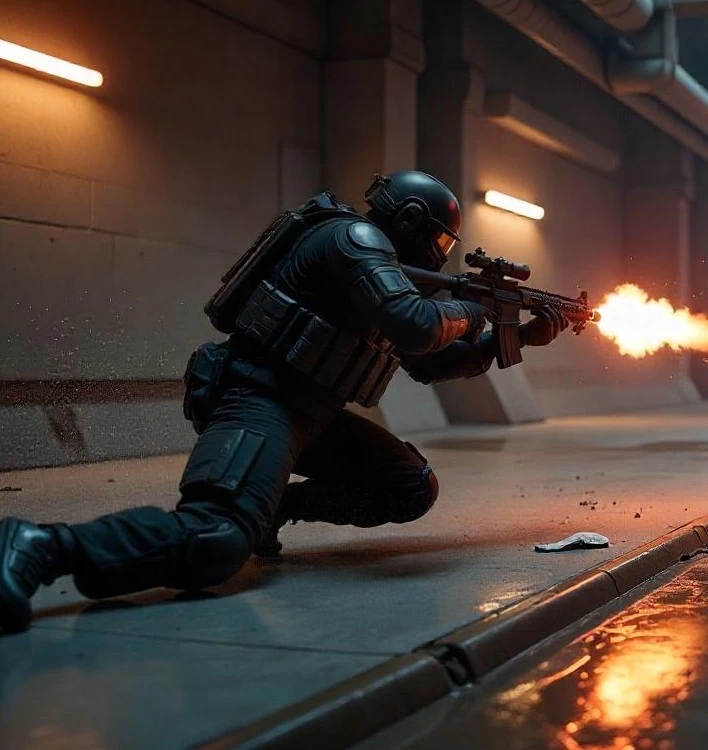Maybe the only thing you need to replenish isn’t your ammo but your tactics!

Image generated with Freepik AI Suite
In the high-speed, adrenaline-fueled multiplayer world of Call of Duty: Black Ops 6, it’s easy to fixate on aiming, movement, or weapon selection. But there’s another mechanic that defines gunfights, player behavior, and momentum more than most players realize—reloading. Reloading is not just a mechanical necessity. It’s a strategic action. A signal. A vulnerability. A mind game. And in Black Ops 6, where the multiplayer pacing has been tuned for maximum responsiveness and flow, reloading culture has evolved in subtle but meaningful ways. In this article, we’ll explore how players use reload timing not just to refill magazines, but to manipulate enemies, conserve tempo, and make conscious micro-decisions that define life or death in any engagement.
Playing better isn’t the only way to come up in the ranks. You would do well to remember you can get a Black Ops 6 boost to get every mastery skin and reach any rank you want!
Reloading as a Tactical Choice, Not a Habit
One of the most common mistakes lower to mid-tier players make is treating reloads as muscle memory. They shoot, they reload. Every time. Whether they used 5 bullets or 25, the hand goes for that button out of reflex.
In Black Ops 6, this kind of autopilot playstyle gets punished. The time-to-kill (TTK) is tight, the engagement range is often close to mid, and most weapons don’t forgive being caught mid-animation. Smart players know that reloading should only happen in a safe window. That means behind cover, after confirming a cleared area, or after repositioning.
You don’t have to top off your mag after every kill. Sometimes it’s better to take the risk of entering the next fight with 14 bullets instead of 30 — especially if the act of reloading could mean being ambushed mid-animation. The discipline to not reload is what separates reactive players from tactical ones.
Animation Commitment and Cancel Windows
Black Ops 6 builds on previous titles’ weapon handling systems by refining animation commitment. Reload animations are smooth, responsive, and often cancellable, depending on the weapon class. But that doesn’t mean you’re safe.
Some weapons, like LMGs and shotguns, lock you into longer reload windows. Others, like SMGs or fast-hand AR builds, give you opportunities to cancel reloads mid-motion with a quick sprint, melee, or weapon swap. Learning the reload timing of your preferred guns is as critical as knowing their recoil or range profile.
In some cases, fake-reloading — starting the animation and then canceling it intentionally — can be used as bait. When opponents hear the signature sound of a reload, they might rush you, assuming you’re vulnerable. A skilled player can weapon-swap back and surprise them with a ready shot. It’s a dirty trick, but a useful one.
Reloading and Audio Psychology
Sound design in Black Ops 6 is sharper than in previous entries, with spatial audio cues playing a bigger role. The sound of gunfire, footsteps, and — yes — reloading, can all be heard at distance depending on perks and equipment in play.
That means reloading isn’t just a risk to you. It’s also information for others. When an enemy hears a reload, they gain more than sound — they gain timing. They know you’ve expended part of your magazine. They know your gun is out of play for a short window. And depending on the weapon, they may even know your exact reload time.
This gives them a tactical edge. If they’re behind a wall, they may time a push the moment they hear you reload. If they’re flanking, they’ll wait for the sound before they breach. If they’re sniping, they may take that moment to rotate forward.
Savvy players use this psychology in reverse. Sometimes the best reload is one of the enemy hears while you’re already halfway across the map. Others mask their reloads with a well-timed explosion or teammate gunfire. Understanding the psychology of sound is key to mastering reload timing in Black Ops 6.
The Reload Trap: When Enemies Use It Against You
Smart players know that the act of reloading can also be a trap. If you hear an enemy reload behind cover, you may assume they’re vulnerable — but the smarter play is often to wait. Many players bait rushes with a partial reload, then catch the aggressor in the open.
This works especially well with LMGs and marksman rifles. The long reload windows these weapons suffer from can be used to create a sense of urgency in the enemy, drawing them out of their power position. When the opponent pushes, they walk into a pre-aim or a claymore. It’s bait. And it works.
Reload baiting is more common than many players realize. What separates a master from a casual player is the ability to recognize when a reload is legitimate and when it’s a setup. There’s a psychological layer to every reload sound. The best players have developed instincts around it.

Image generated with Freepik AI Suite
Loadout Design and Reload Management
Your choice of perks and attachments significantly changes how you approach reloads. Fast Hands (or its BO6 equivalent) makes an obvious impact, letting you cut your animation times and recover faster from engagements. But other perks, like scavenger-type perks that replenish ammo from fallen enemies, reduce the need to worry about conserving bullets.
Magazine attachments also influence reload discipline. High-capacity magazines encourage aggressive push playstyles, reducing how often you need to reload. Conversely, using smaller mags with increased reload speed is a style that favors mobility and hit-and-run tactics.
The key is making sure your build supports your rhythm. If you play aggressively but your gun reloads like a truck, you’re going to lose tempo. If you play methodically but you’ve got 80 bullets per mag, you’re probably sacrificing aim-down-sight (ADS) speed or recoil control that you don’t need to.
Tailor your reload speed and magazine size to your intended playstyle. You’ll find that your reloads become smoother, safer, and more integrated into your rhythm.
Weapon Class Differences in Reload Behavior
Every weapon class in Black Ops 6 comes with its own reload culture. Here’s a quick breakdown:
SMGs: Fast reloads encourage aggressive re-engagement. Players often reload after every fight, but should learn to rely on ammo counts and cancel reloads mid-animation.
- Assault Rifles: Balanced reloads. Many players run fast mag attachments to improve consistency. Reload timing can be predictive, especially with burst or low-capacity ARs.
- LMGs: Long, punishing reloads. These weapons demand planning and cover usage. Reloading after every kill is suicide. Many LMG users rely on killstreak momentum to stay alive long enough to safely reload.
- Shotguns: Often reload shell-by-shell. That means reloading is more about staying flexible. You can choose to reload just 1–2 shells between fights. The rhythm here is highly dynamic.
- Snipers and Marksman Rifles: Reloading often occurs between shots or kills. Knowing how many rounds you need to stay lethal without compromising focus is crucial.

Image generated with Freepik AI Suite
In Conclusion
Reloading may not be the flashiest mechanic in Black Ops 6, but it’s a deeply tactical one. It influences every fight, every push, every retreat. It reflects how disciplined you are. How confident. How well you understand the flow of combat.
Players who mindlessly tap the reload button are playing checkers. Players who reload only when it’s safe, who use reloads to bait enemies or mask movement, are playing chess.
Next time you rack up an elimination and think about reload, you should ask yourself if you really need to do that right now. It could be the difference between defeat and victory!




